Long Island Sound 'listening tour' to initiate environmental report cards: Part 2
Bill Dennison ·Following our Connecticut stops, we took the Cross Sound Ferry from New London, CT over to the tip of the north fork of Long Island at Orient Point. From the ferry we could see some important features of Long Island Sound. First, as we sailed out of the Thames River, we could see the rocky headlands, industrial development (particularly the submarine manufacturing base) and busy harbor traffic. We could see the chain of islands stretching from Long Island to Connecticut which was formed from the continental glacial moraine. As we crossed 'The Race', a deep channel between the islands, we could see evidence of the high velocity tidal currents exchanging water between Long Island Sound and Block Island Sound, manifested as tidal rips which produced streaks on the water surface. As we approached Long Island, we could see the sandy bluffs of the north shore of Long Island. We passed by Plum Island and landed at Orient Point where we drove past the north shore vineyards, farms and small towns until we reached the Long Island Expressway, en route to our next stop.
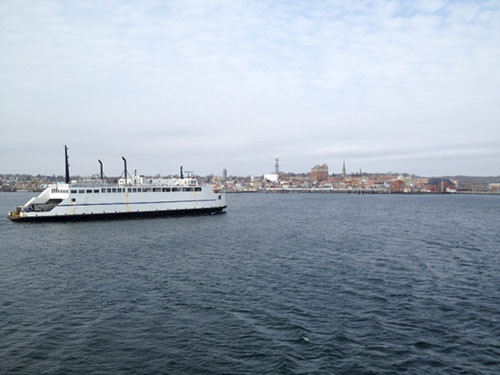
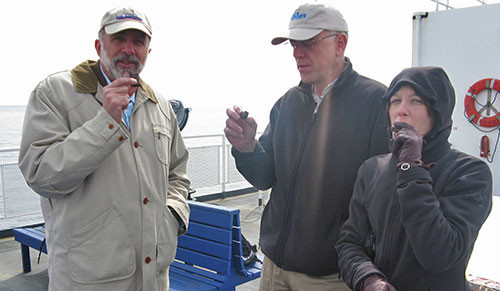
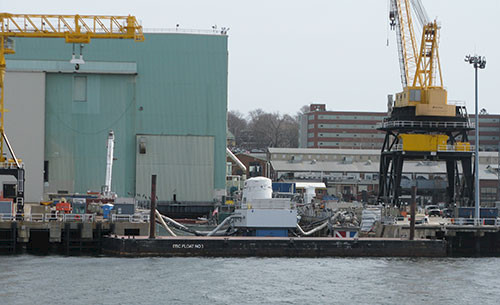
The fourth stop on the 'listening tour' was at Hempstead Harbor on the north shore of Long Island. We met with Carol DiPaolo from the Coalition to Save Hempstead Harbor, formed in 1986, and Eric Swenson and Tom Powell from the Hempstead Harbor Protection Committee, formed in 1995, in an old church in Sea Cliff which was converted into a library and town offices. We were also given a short driving tour of Hempstead Harbor by Carol, which included some nice houses (the North shore of Long Island is known as the 'Gold Coast'), impressive beaches, contaminated 'Superfund' sites, and vistas of the inner and outer harbor. We learned about William Cullen Bryant (1794-1878) who wrote poetry about the region, Glen Cove industry, shellfishing in the outer harbor, nearby toxic algal blooms ('red tide' in Oyster Harbor), and plans to demolish the old power plant.
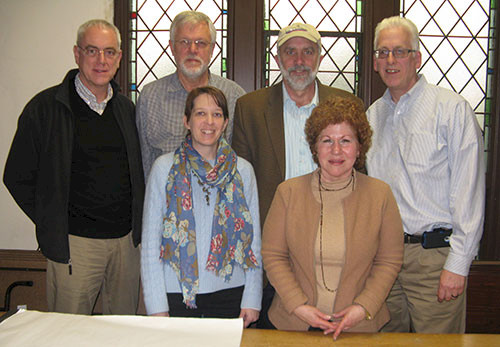
Our final stop was at Stony Brook University where met met with New York State Department of Environmental Conservation, Stony Brook faculty and Lynn Dywer from the National Fish and Wildlife Foundation. Since I spent three years at Stony Brook as a postdoctoral fellow in the Coastal Marine Scholar program (1984-1987), I knew most of the people in the room. I introduced myself by stating that while I was at Stony Brook, I had three major life changing discoveries: 1) Instead of the 'pure' research I had envisioned with seagrasses and scallops, I ended up chasing down 'brown tide' blooms that I helped discover and elucidate, which became very applied science in the public arena (the New York Times called us the "bloom busters"). I have been conducting applied science ever since. 2) The opportunity to accompany Drs. Doug Capone and Linda Duguay to Australia and study the Great Barrier Reef was a life changing trip, and eventually resulted in my ten year stint at the University of Queensland and a lifetime involvement with science and environmental issues in Australia. 3) On a research cruise to the Bahamas, I became enamored with one of Doug Capone's graduate students, Judy O'Neil, and twenty five years of marriage with two children later, this was definitely a life changing event. So it was nice revisiting the scene of a significant phase of my life and to see old friends like Glenn Lopez and Bob Cerrato again.
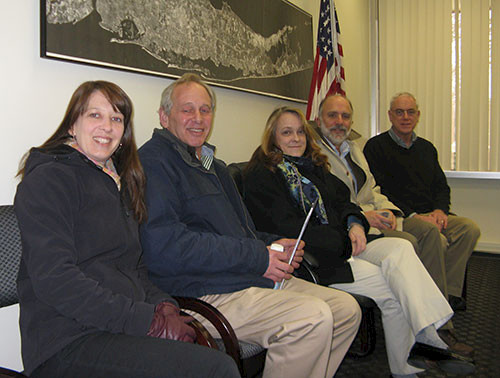
At Stony Brook, we met with Bruce Brownawell, Bob Cerrato, Kamasima Lwisa, and Glenn Lopez from the School of Marine and Atmospheric Sciences and Christine O'Connell from the Alan Alda Center for Communicating Science. In addition, Charlie deQuillfeldt from New York Department of Environmental Conservation participated. We heard the term "Sewage estuary", referring to when the majority of an estuary's nutrient sources are from sewage discharges in reference to western Long Island Sound and the 'Narrows'. We learned about tracing various contaminants to Long Island Sound using various metabolites and sewage tracers. We also found out that there is little monitoring of shellfish populations in spite of an active shellfish fishery, with a need to understand recruitment and predation in addition to harvest intensity in order to understand shellfish population dynamics. Even though the synthesis book 'Long Island Sound: Prospects for the Urban Sea' was only published a few months ago, there are some recent and 'in press' scientific papers that the faculty alerted us to.
This 'listening tour' was a really good way for us to become familiarized with Long Island Sound, Norwalk and Hempstead Harbors, meet key people that we will be working with and identify data availabilities and sources for our report card efforts. It was also nice to meet many of the partners we will be working with at their respective offices so we have a mental map of their locations as we work with them virtually or at centralized meeting locations in the future.
About the author
Bill Dennison

Dr. Bill Dennison is a Professor of Marine Science and Vice President for Science Application at the University of Maryland Center for Environmental Science.